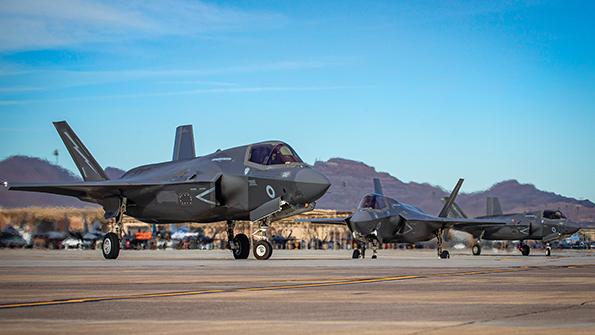
Post-Brexit Britain is taking its first steps toward understanding its place in the world and the military capabilities it may need to ensure it can hold onto that status.
A review, described by Prime Minister Boris Johnson as the most extensive of its kind since the end of the Cold War, is examining the UK’s foreign, defense, security and development policies. And it is proceeding despite the challenges and costs surrounding the COVID-19 pandemic.
Although it will examine the work of several government departments—notably the Foreign Office, the Defense Ministry and the Department for International Development—considerable focus is likely to be on defense. It has the largest budget of those under the microscope and an oft-criticized procurement process that some in government are eager to overhaul.
- UK Ministers want to complete the review within months
- Equipment plans are still challenged by budget deficits
The process will run in parallel with the government’s comprehensive spending review. That assessment decides UK government spending for the next three years and will deliver its findings potentially as early as this summer. Some critics argue that is simply too soon for a thorough analysis of Britain’s future defense needs.
“If you are to have a strategy that is worth the name, you must address ends, ways and means together. . . . If you do not do the whole package, including the money, together, then you do not have a strategic review,” Jock Stirrup, a former chief of the Royal Air Force (RAF) and UK Defense Staff, told parliamentary defense committee hearings on March 17.
The 2020 review represents a break from the traditional defense-led Strategic Defense and Security Review (SDSR) usually held every five years. Some analysts contend the 2020 edition could shape defense capabilities for decades to come. Jack Watling, Land Warfare research fellow at the London-based Royal United Services Institute (RUSI) says the review would have to make “hard choices” but that these would “determine the trajectory of the UK’s defense capabilities for a generation.”
He notes that for a post-Brexit Britain looking to expand its trading and security partners, future conflicts may be difficult to avoid. “Security and trade partnerships are closely intertwined. . . . If ‘Global Britain’ means diversifying our economic partnerships, it will be necessary to build meaningful security ties as well,” Watling says.
The UK must look at its role in the Euro-Atlantic alliance and in the Great Power competition, in addition to other global issues and homeland security, Defense Minister Ben Wallace told Parliament. The review will also “place prosperity and manufacturing at its heart,” he added.
The assessment comes at a challenging time for Britain’s defense and its equipment-procurement plans. The National Audit Office recently warned that for a third consecutive year there will be shortfalls in the budget. The ministry’s plans call for the spending of £183.6 billion ($214 billion) over the next 10 years, equivalent to 42% of the ministry budget during that period. Auditors say the Defense Ministry has a shortfall of at least £2.9 billion over that period, but this could be as high as £13 billion.
Although the UK is expanding its intelligence, surveillance and reconnaissance (ISR) capabilities with the upcoming arrival of the General Atomics Protector unmanned aircraft system and deliveries of the Boeing P-8 Poseidon maritime patroller—two of which have already arrived—capability gaps in the ISR mission are imminent.
The planned retirement of the RAF’s long-suffering Boeing E-3D Sentry fleet has been pushed to December 2022. But the Boeing E-7 Wedgetail, the 737-based platform planned as its replacement, is not due to enter service until the end of 2023, potentially leaving a yearlong capability gap. The RAF also plans to retire its Raytheon Sentinel radar-reconnaissance platform in March 2021. It got several reprieves after its Afghanistan duties ended, but its departure would leave the UK without a standoff ground-moving-target-indicator and synthetic aperture radar platform.
Several commitments made in the 2015 SDSR, such as the UK’s decision to commit all 138 Lockheed Martin F-35 Joint Strike Fighters across the lifetime of the program, have also not been budgeted, auditors note. Current plans forecast only the costs of the first 48 aircraft. The government says that “decisions on future numbers and aircraft variants will be taken at the relevant time,” but it is unclear whether this will be considered in the review.
The British government is aiming to maintain the target of 2% of GDP set by NATO for all allies. Defense ministers have said they will fight to meet that share, and more if needed, although the UK has a history of not fully funding post-review defense portfolios. “It is not a review designed to cut costs,” says Jeremy Quin, minister for defense procurement. “It is a review designed to ensure we know what we are doing in the world and that [this is achieved] through really effective equipment.”
Along with defining capabilities required for land, sea and air, the review is also likely to conclude that the UK should make additional investment in both the cyber and space domains.
